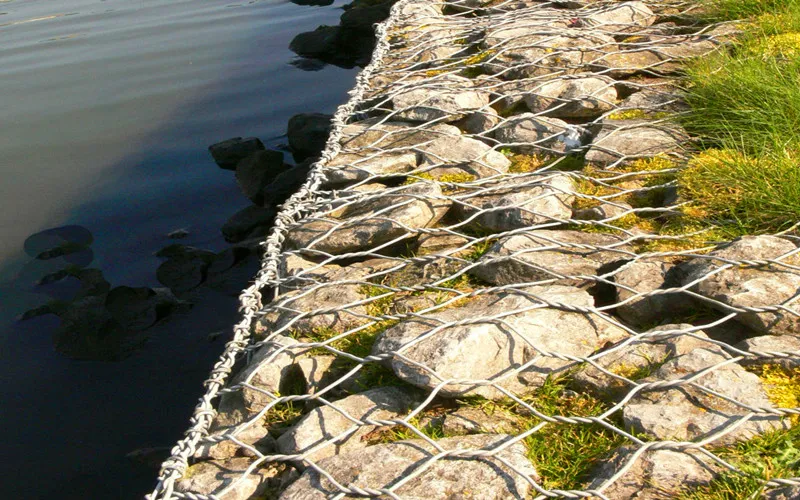-
 Phone:
Phone: -
 Email:
Email:

Innovative Wire Mesh Solutions for Durable Rock Retaining Walls in Landscaping Projects
Wire Mesh Rock Retaining Walls An Innovative Solution for Earth Retention
In the realm of civil engineering and landscaping, retaining walls play a critical role in managing ground stability and controlling erosion. Among the various designs available, wire mesh rock retaining walls have emerged as an innovative and effective solution for managing earth retention needs. This article delves into the features, benefits, applications, and construction methods associated with wire mesh rock retaining walls.
Understanding Wire Mesh Rock Retaining Walls
Wire mesh rock retaining walls are structures composed of a wire mesh framework filled with rocks or stone. This type of wall provides a robust yet flexible method for retaining soil, making it suitable for a variety of landscapes and geological conditions. The wire mesh acts as a container, allowing natural rock formations to be utilized as the fill material, which can enhance the wall's aesthetic appeal while also offering functional benefits.
Benefits of Wire Mesh Rock Retaining Walls
1. Eco-friendliness The use of natural rock and stone material in wire mesh walls contributes to an environmentally friendly approach to construction. These materials are often locally sourced, reducing the carbon footprint related to transportation, and they promote natural drainage and biodiversity.
2. Drainage and Erosion Control One of the standout features of wire mesh rock retaining walls is their permeability. Water can flow through the gaps in the rock fill and mesh, significantly reducing hydrostatic pressure build-up behind the wall, which makes them less prone to failure. This drainage capability also minimizes soil erosion, protecting surrounding landscapes.
3. Versatility in Design Wire mesh rock retaining walls can be constructed to fit various designs and sizes, making them adaptable to different landscapes and engineering requirements. Whether it’s for a residential project, a highway, or a large-scale commercial endeavor, these walls can be tailored to meet specific demands and aesthetic preferences.
4. Cost-Effectiveness Compared to traditional concrete or masonry retaining walls, wire mesh rock walls can be more economical. The material costs are often lower, especially when local rock is used, and the construction process can be quicker, saving on labor costs.
Applications of Wire Mesh Rock Retaining Walls
Wire mesh rock retaining walls find applications in numerous fields, including
- Road and Highway Construction These walls are ideal for stabilizing slopes along highways, preventing landslides, and managing runoff water. - Residential Landscaping Homeowners utilize wire mesh walls to create terraced gardens, define property boundaries, or enhance outdoor aesthetics while ensuring soil stability.
wire mesh rock retaining wall

- Recreational Areas Parks and hiking trails can benefit from these retaining structures, providing both functional support and scenic visuals in natural settings.
- Industrial Facilities Manufacturing sites or warehouses often require effective erosion control, making wire mesh rock retaining walls a viable choice for their properties.
Construction Methods
The construction of wire mesh rock retaining walls involves several essential steps
1. Site Preparation The area where the wall will be constructed must be prepared by clearing vegetation, grading the land, and addressing drainage needs.
2. Foundation Installation A stable foundation is crucial. This often consists of a leveled area where the first row of wire mesh baskets will be placed.
3. Wire Mesh Assembly Roll-out or panel wire mesh is shaped and secured, forming the framework for the wall. The mesh is typically coated with galvanization or other protective measures to ensure durability against corrosion.
4. Filling with Rocks Large rocks or stones are loaded into the wire mesh baskets to create the fill that provides weight and stability to the structure.
5. Finishing Touches Once filled, additional layers can be added as needed, and vegetation or landscaping can be improved to integrate the wall into the surrounding environment.
Conclusion
Wire mesh rock retaining walls represent a proven, efficient, and environmentally responsible solution for a variety of engineering and landscaping challenges. With their capacity for drainage, aesthetic versatility, and cost-effectiveness, they are likely to remain a popular choice among engineers, landscapers, and homeowners alike. As the demand for sustainable construction solutions continues to grow, wire mesh rock retaining walls are well-positioned to meet these evolving needs while providing essential structural support.
-
Wire Mesh for Every Need: A Practical SolutionNewsJul.25,2025
-
Steel Fences: Durable, Secure, and Stylish OptionsNewsJul.25,2025
-
Roll Top Fencing: A Smart Solution for Safety and SecurityNewsJul.25,2025
-
Cattle Farm Fencing Solutions for Maximum SecurityNewsJul.25,2025
-
Affordable Iron Binding Wire SolutionsNewsJul.25,2025
-
Affordable Galvanized Wire SolutionsNewsJul.25,2025
-
Wire Hanger Recycling IdeasNewsJul.25,2025








